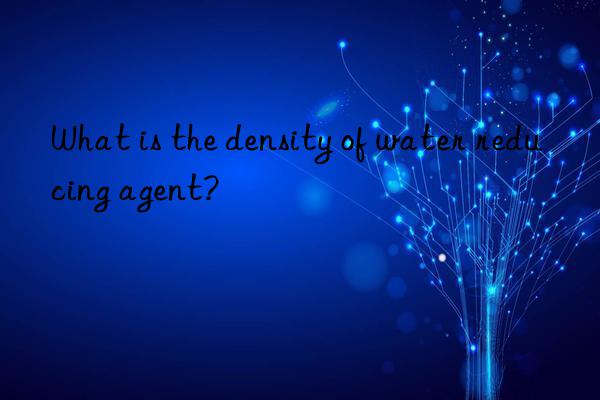
Water-reducing admixture refers to an admixture that can reduce the amount of mixing water and increase the strength of concrete while maintaining the workability and cement dosage of the concrete; or it can save the cement dosage while maintaining the workability and strength. The density of water reducing agent is usually (1.09±0.02) g/ml. At normal temperature, its density decreases slowly as the temperature increases.
High-efficiency water-reducing admixtures are suitable for concrete construction where the daily minimum temperature is above 0°C, and are suitable for preparing high-fluidity concrete, high-strength concrete and steam-cured concrete. Water-reducing agent is a high-performance water-reducing agent and a cement dispersant used in cement concrete. It can be divided into two categories chemically. The main chain is methacrylic acid, and the side chain is carboxylic acid group and MPEG ( Methoxy polyethylene glycol), polyester structure. The other one has a main chain of polyacrylic acid and a side chain of Vinyl alcohol polyethylene glycol, a polyether structure.
Water reducing agent is particularly suitable for preparing concrete projects with high durability, high fluidity, high slump retention, high strength and high appearance requirements. It can maintain a certain workability of the concrete mixture. Admixture that reduces water consumption and improves strength and workability. Many people don’t know what the density is when using it in construction and how to configure it. What is the general density of water reducing agent?
Polyester is easy to hydrolyze under the strong alkaline conditions of concrete and the process is complicated, so Its usage may be declining. The strength of cement concrete depends on the ratio of water and cement, W/C - water-cement ratio. When W/C is smaller, the strength of the concrete material is higher, which is why it is also called concrete water-reducing agent. Of course, for concrete construction, the concrete must maintain a certain degree of workability and fluidity. The routine test is the slump of the concrete.
The advantage of high-performance concrete is not only its high strength, but more importantly, this structural material has a series of corresponding excellent properties. Its early strength develops rapidly and requires only a short maintenance period even in winter, ensuring the speed of project progress; it has long-term durability; it has strong resistance to chemical corrosion and can be used in various special projects; On the basis of water rate and high strength, it also has excellent construction properties such as excellent working performance, easy pumping, and easy compaction. Among the technical measures for preparing high-performance concrete, the key lies in the rational use of high-performance chemical admixtures, especially high-performance water-reducing admixtures that have efficient water reduction, appropriate air entrainment, and can reduce and prevent slump loss over time.
Water reducing agents are divided into two categories: liquid and solid. The liquid density is between 1.1-1.25, which is related to the content. The density (g/L) is 500-600. The dosage is the total weight of the cementitious material. 0.4% ~ 2.0%, the common dosage is 0.4% ~ 1.2%; a concrete trial mix test should be carried out before use to find the optimal dosage.
Under the condition of keeping the slump of concrete basically unchanged Under this condition, adding 2000HCI can save 10-15% of cement usage, while the early strength of concrete can still be improved compared to those without it. The impermeability, frost resistance and durability of concrete mixed with 2000HC I are significantly improved compared to those without it. It cannot be used in combination with naphthalene-based high-efficiency water-reducing admixtures. When used in combination with other admixtures, a concrete compatibility test should be carried out in advance. Under the condition of reducing the cement dosage by 15%, its anti-freeze performance is still the same as that without it. .
Today I will share the general density of water-reducing agent. Its density depends on the product it is mixed with. Its appearance is divided into water agent and powder. The solid content of liquids is generally 20%, 40% (also called mother liquor), and 60%, and the solids content of powders is generally 98%.</p

 微信扫一扫打赏
微信扫一扫打赏

